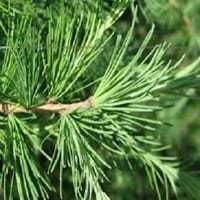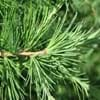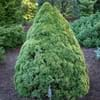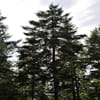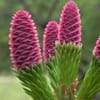Life Span
Perennial
Perennial
Type
Needled or Scaled Evergreen
Perennial
Origin
Eastern Europe, Northern Europe, Russia/Siberia, Central Asia, Nepal, China
Southeastern United States, North-Central United States, Central United States, South-Central United States, Southwestern United States, Texas, Canada, Mexico
Types
not available
Not Available
Habitat
Cold Regions
Dry areas, Prairies, Rocky areas, rocky outcrops
USDA Hardiness Zone
1-5
3-10
Sunset Zone
A1, A2, A3, 1a, 1b, 2a, 2b
A1, A2, A3, H1, H2, 1a, 1b, 2a, 2b, 3a, 3b, 4, 5, 6, 7, 8, 9, 10, 11, 12, 13, 14, 15, 16, 17, 18, 19, 20, 21, 22, 23, 24
Habit
Upright/Erect
Upright/Erect
Flower Color
Green, Red, Yellow
Yellow, Purple, Burgundy, Light Green, Brown
Flower Color Modifier
Bicolor
Bicolor
Fruit Color
Brown, Yellow
Brown
Leaf Color in Spring
Light Green
Light Green, Gray Green
Leaf Color in Summer
Light Green
Light Green, Gray Green
Leaf Color in Fall
Yellow
Light Green, Gray Green
Leaf Color in Winter
Not Available
Light Green
Leaf Shape
Needle like
Subulate
Plant Season
Spring, Summer, Fall
Summer
Sunlight
Full Sun, Partial Sun
Full Sun
Type of Soil
Clay, Loam, Sand
Loam, Sand
The pH of Soil
Acidic, Neutral, Alkaline
Neutral
Soil Drainage
Average
Well drained
Bloom Time
Not Available
Late Spring, Early Summer, Summer, Late Summer
Tolerances
Drought
Drought
Where to Plant?
Ground
Ground
How to Plant?
Seedlings
Seedlings
Plant Maintenance
Medium
Medium
Watering Requirements
Keep the Soil well drained
Average Water Needs, Water in morning to avoid prompting diseases
In Summer
Lots of watering
Lots of watering
In Spring
Moderate
Moderate
In Winter
Average Water
Average Water
Soil pH
Acidic, Neutral, Alkaline
Neutral
Soil Type
Clay, Loam, Sand
Loam, Sand
Soil Drainage Capacity
Average
Well drained
Sun Exposure
Full Sun, Partial Sun
Full Sun
Pruning
Prune to control growth, Remove damaged leaves, Remove dead branches, Remove dead leaves
Cut or pinch the stems, Pinch Tips, Remove damaged leaves, Remove dead branches, Remove dead flowers, Remove dead leaves, Remove dead or diseased plant parts, Remove deadheads
Fertilizers
All-Purpose Liquid Fertilizer
All-Purpose Liquid Fertilizer, Apply N-P-K
Pests and Diseases
Armillaria root rot, larch sawfly, Needle rust
Pests and diseases free, Red blotch
Plant Tolerance
Dry Conditions
Drought, Dry Conditions, Dry soil, Full Sun
Flowers
Insignificant
Showy
Flower Petal Number
Single
Single
Foliage Texture
Fine
Fine
Foliage Sheen
Matte
Matte
Attracts
Rodents
Birds, Butterflies
Aesthetic Uses
Landscape Designing, Showy Purposes, Woodland margins
Borders
Beauty Benefits
Not Available
Not Available
Environmental Uses
Air purification
Air purification
Medicinal Uses
Unknown
Analgesic
Part of Plant Used
Not Available
Flowers
Other Uses
Application in Furniture
Can be made into a herbal tea, Used in making tea
Used As Indoor Plant
No
No
Used As Outdoor Plant
Yes
Yes
Garden Design
Feature Plant
Container, Cutflower, Mixed Border, Wildflower
Botanical Name
LARIX sibirica
RATIBIDA columnifera
Common Name
Siberian Larch
Mexican Hat
In Hindi
Siberian Larch
Mexican Hat
In German
Sibirische Lärche
Mexican Hat
In French
Mélèze de Sibérie
Mexican Hat
In Spanish
Larix sibirica
mexican Hat
In Greek
siberian larch
Mexican Hat
In Portuguese
siberian larch
Mexican Hat
In Polish
Modrzew syberyjski
Mexican Hat
In Latin
Siberian larch
Mexicanus Hat
Phylum
Pinophyta
Tracheophyta
Class
Pinopsida
Magnoliopsida
Family
Pinaceae
Asteraceae
Clade
Not Available
Angiosperms, Asterids, Eudicots
Tribe
Not Available
Not Available
Subfamily
Not Applicable
Not Available
Number of Species
Not Available
Not Available
Season and Care of Siberian Larch and Mexican Hat
Season and care of Siberian Larch and Mexican Hat is important to know. While considering everything about Siberian Larch and Mexican Hat Care, growing season is an essential factor. Siberian Larch season is Spring, Summer and Fall and Mexican Hat season is Spring, Summer and Fall. The type of soil for Siberian Larch is Clay, Loam, Sand and for Mexican Hat is Loam, Sand while the PH of soil for Siberian Larch is Acidic, Neutral, Alkaline and for Mexican Hat is Neutral.
Siberian Larch and Mexican Hat Physical Information
Siberian Larch and Mexican Hat physical information is very important for comparison. Siberian Larch height is 910.00 cm and width 30.00 cm whereas Mexican Hat height is 30.00 cm and width 30.50 cm. The color specification of Siberian Larch and Mexican Hat are as follows:
Siberian Larch flower color: Green, Red and Yellow
Siberian Larch leaf color: Light Green
Mexican Hat flower color: Yellow, Purple, Burgundy, Light Green and Brown
- Mexican Hat leaf color: Light Green and Gray Green
Care of Siberian Larch and Mexican Hat
Care of Siberian Larch and Mexican Hat include pruning, fertilizers, watering etc. Siberian Larch pruning is done Prune to control growth, Remove damaged leaves, Remove dead branches and Remove dead leaves and Mexican Hat pruning is done Cut or pinch the stems, Pinch Tips, Remove damaged leaves, Remove dead branches, Remove dead flowers, Remove dead leaves, Remove dead or diseased plant parts and Remove deadheads. In summer Siberian Larch needs Lots of watering and in winter, it needs Average Water. Whereas, in summer Mexican Hat needs Lots of watering and in winter, it needs Average Water.
